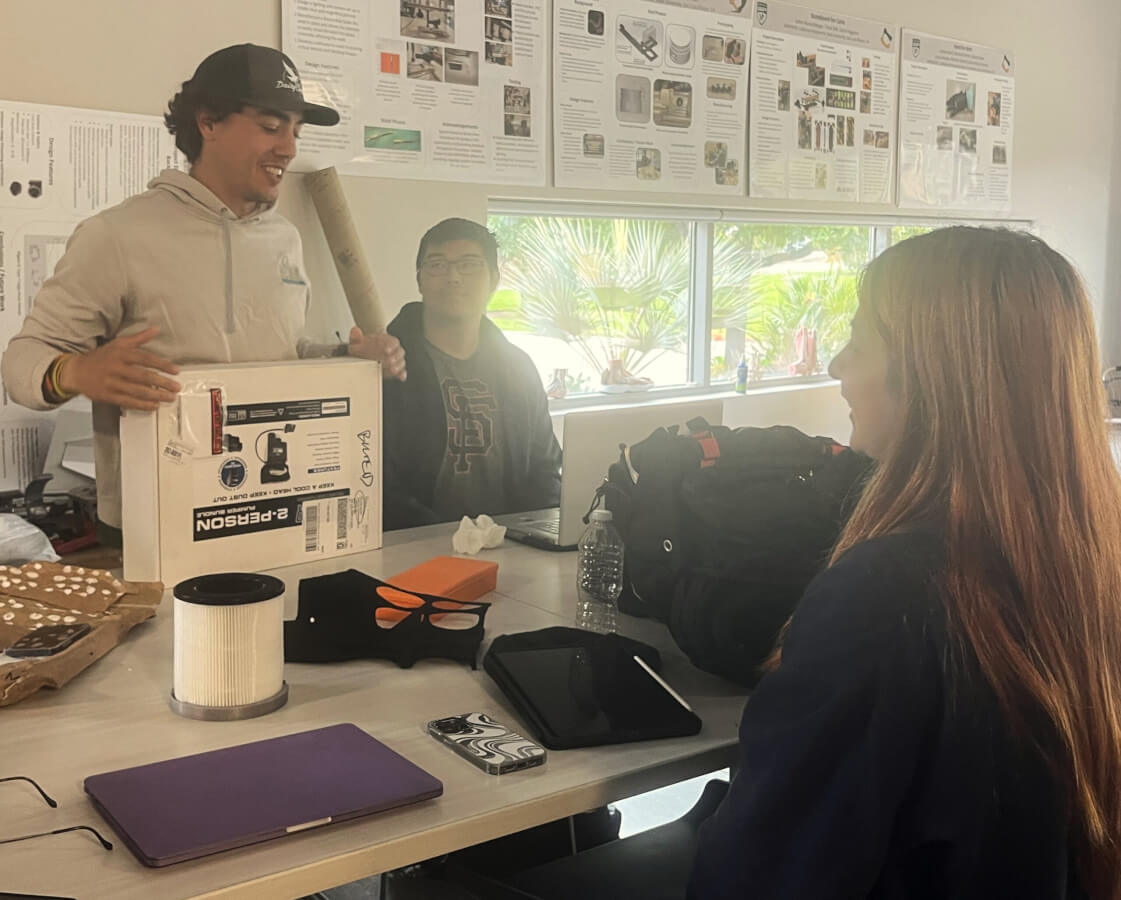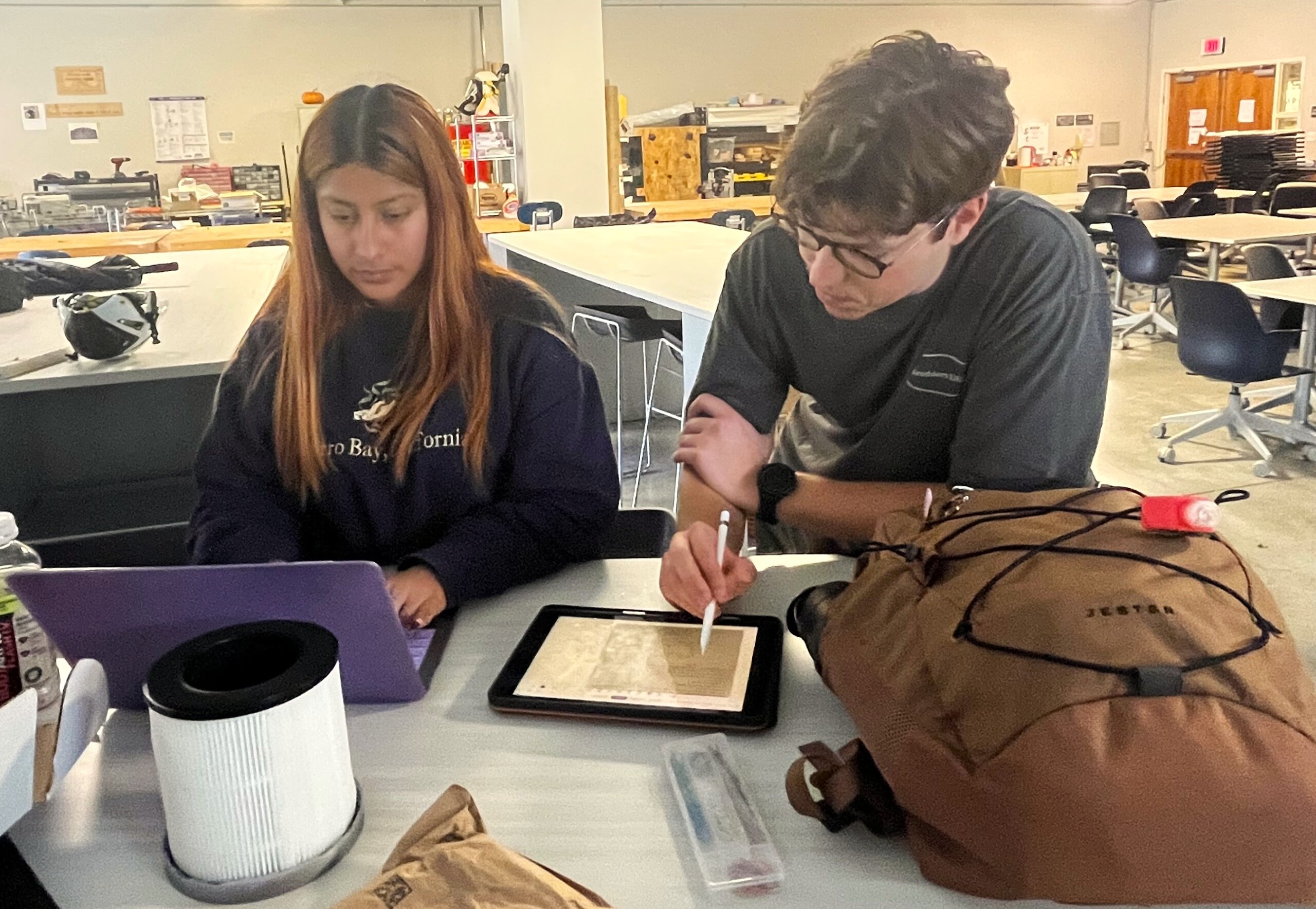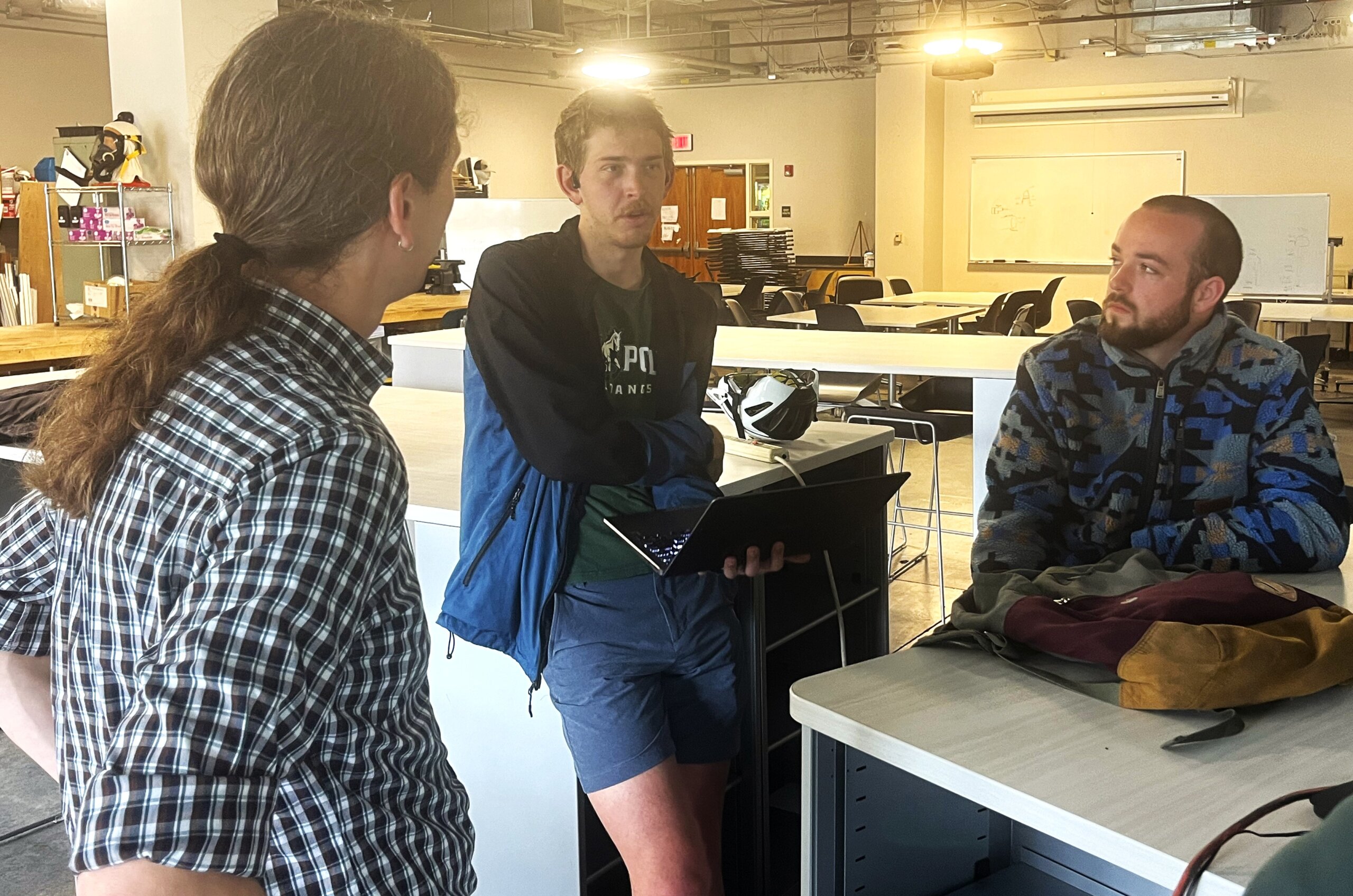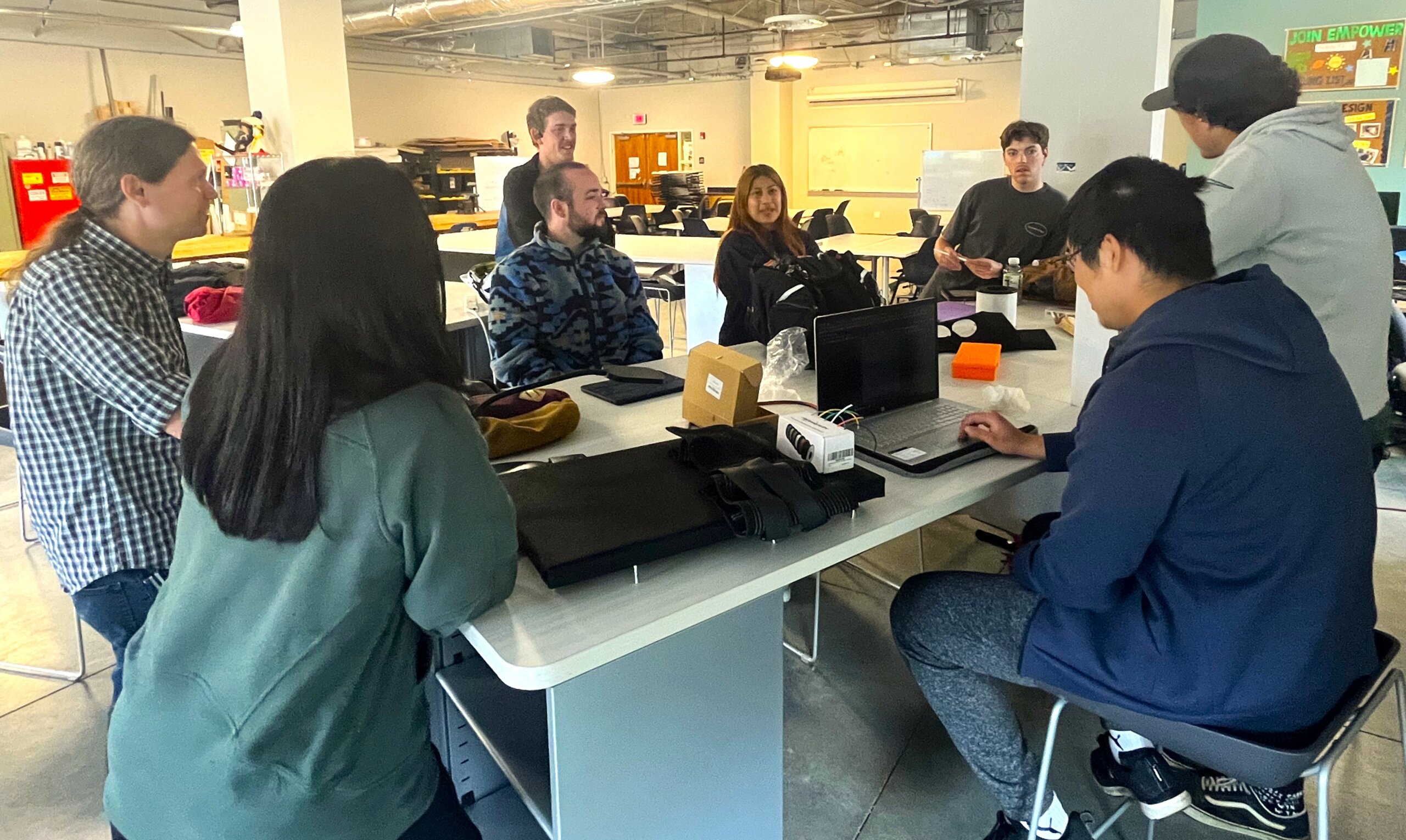In a state grappling with the escalating threat of wildfires, a dedicated team of senior engineering students is confronting the challenge of mitigating cancer risks for wildland firefighters.
Handpicked for their varied expertise, these six students from five disciplines are at the helm of a project that spans two colleges and a fire institute, supported by Cal Fire funding.
Their goal is to engineer solutions that purify the air firefighters breathe and provide cooling relief. The hurdle they face is creating a device that can replace the minimal protection of a traditional bandana, ensuring it’s something firefighters actually will want to use.
“Wildland firefighters prefer not to wear anything that hinders their work; they’ll just rip it off,” explained Oliver Pilon, a biomedical engineering major and team member. “So, we needed to create something they’d genuinely want to wear.”
Now in its second year, the three-year initiative is being propelled forward by this “super team” of students, who are making impressive progress on a concept and design poised to redefine wildland firefighter safety.
“I am gung-ho about this device because it has the potential to save lives, mine included,” Pilon said.

Supporting the front line
Wildland firefighters, exposed to wood smoke full of harmful air pollutants, face an elevated risk of cancer from battling the wildfires that sweep through the nation and state.
“In that field, dealing with cancer and confronting the reality of death is part of the work,” said Pilon, who, alongside his biomedical engineering studies, has undertaken wildland firefighting training in preparation for joining a crew this summer and a future career in the field.
Despite heightened risks, many wildland firefighters depend solely on heat-resistant shrouds or bandanas, eschewing the more cumbersome gear that provides enhanced protection.
Pilon and his team are committed to developing an innovative solution – a helmet-compatible face shield equipped with a hose that directs filtered air, creating an air curtain. The dual-function design aims to both cool the firefighter and purify the surrounding air.
The project launched after Cal Fire’s grant was awarded to the nonprofit Wildfire Conservancy, which is supporting various initiatives across multiple institutions, including Cal Poly.
“We have several projects at Cal Poly that focus on the development and study of equipment and strategies to protect firefighters working in the wildland-urban interface,” said chemistry Professor Matthew Zoerb, who is advising the team with engineering Professor Lily Laiho.
In its first year, the project was spearheaded by two separate teams. This year, however, it has been unified into a single group – dubbed a “super team” by Zoerb.
Among the six students, five engineering disciplines are represented: biomedical, electrical, general, mechanical and manufacturing.
“We selected team members for their diverse interests and backgrounds,” Laiho said. “Their interest and passion drive them, and they are genuinely excited about their work and the impact it can have.

United for good
Recently, in the TECHE Lab – a space dedicated to nurturing innovative solutions for individual and societal challenges – the team updated advisers Laiho and Zoerb on their progress.
Their work focuses on the key components of the project: air delivery, battery power and filtration systems.
Xaviera Pons (electrical engineering) was keen to discuss her involvement, inspired by the personal connection of having friends and family who are firefighters.
Early in their research, Pons and Jack Adema (manufacturing engineering) visited Fire Station 1 in San Luis Obispo to gather ideas and feedback from the firefighters, who all had wildfire experience.
“They had the mentality of not if, but when they will get cancer,” Pons said. “That drives me, and we talk about that often as a team.”
Adema, who also has firefighters in his family, is convinced any device capable of reducing the extreme heat faced by wildland firefighters will be appealing.
“If it cools them, there is a way better chance they’ll use it,” he said, describing how air will flow over the face.
Calder Wood (mechanical engineering) has applied his expertise to the air delivery system and the project’s final design.
“There is a ton of space to be creative,” he said. “The broad scope itself was a significant draw for me.”
This sentiment underscores the collaborative progress, as each member has built upon the concepts initiated by last year’s teams, highlighting the advantages of an interdisciplinary approach.
Following this trend of innovation, the project also features a fire-resistant shield, conceived by Tommy Ozawa (general engineering). The shield, designed to attach easily to a helmet with magnets, facilitates quick removal.
Ease of use and a cooling feature are critical, according to Ozawa, who said the project was intriguing and pushed him outside his comfort zone. He believes the experience will also benefit him as he looks toward a career in the sports industry.
Payton Mayer (electrical engineering), who also has a background in sports, likened their device to a blower used in a NASCAR race car used to direct air toward the driver to provide cooling and ventilation.
“We want to have something that works in practice, not just in theory,” he said.
Pons echoed Mayer’s sentiment: “We want to build a device for firefighters, not for engineers.” She is eager to field-test their prototype with firefighters, including potentially Pilon, as the project moves into its final year.
“Hopefully,” she added, “this device will end up saving lives.”
By Emily Slater



